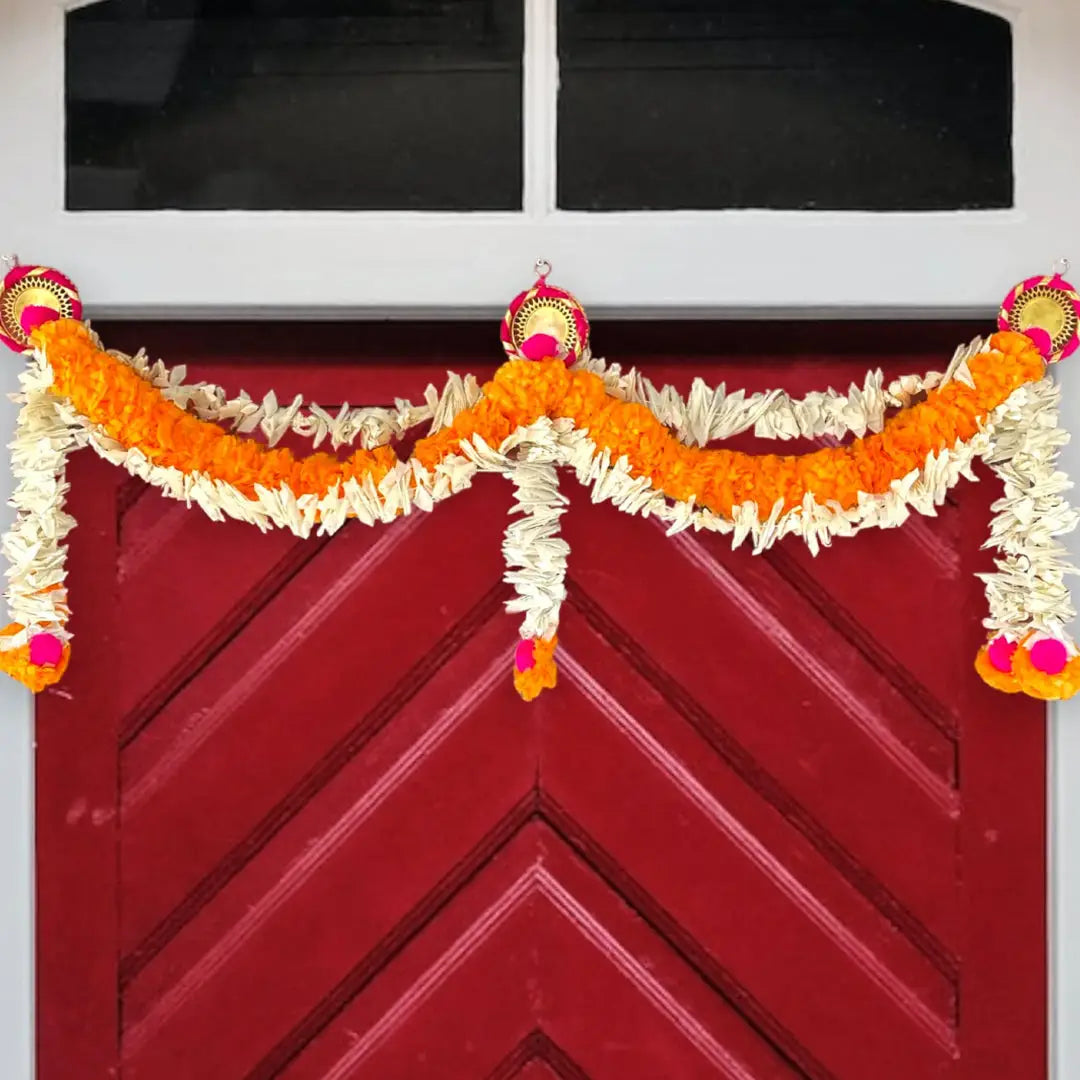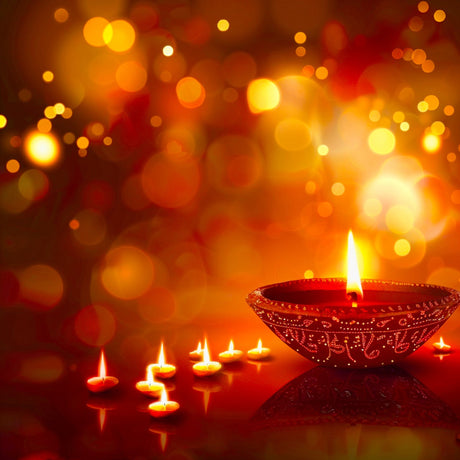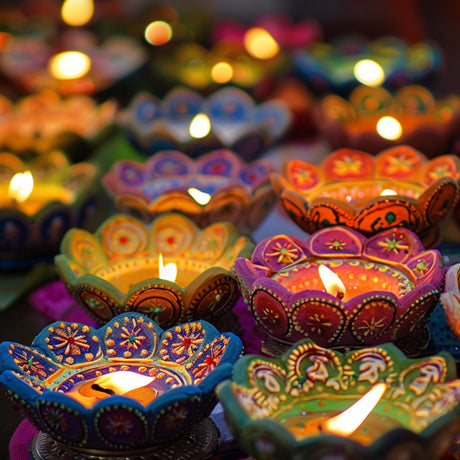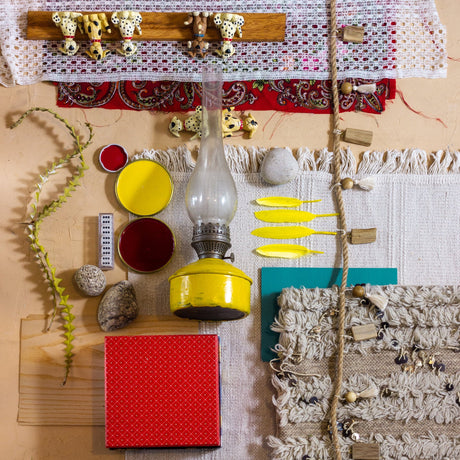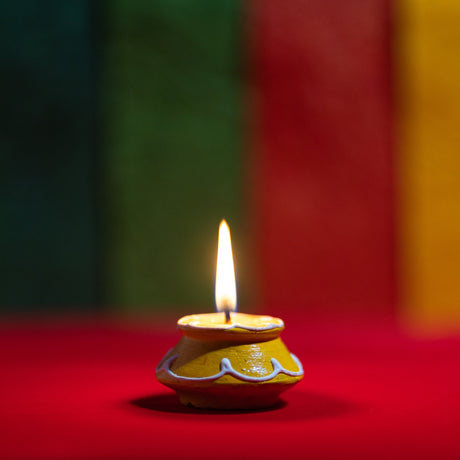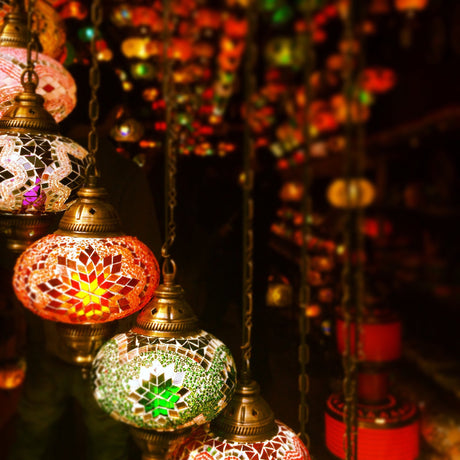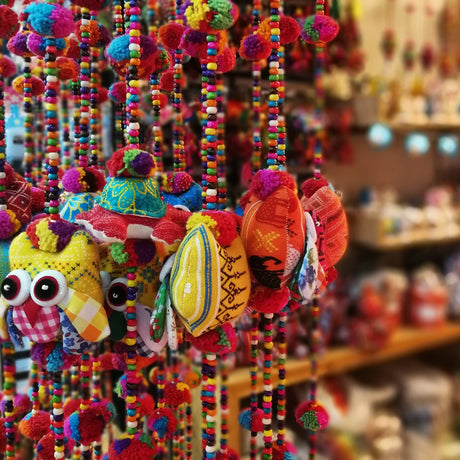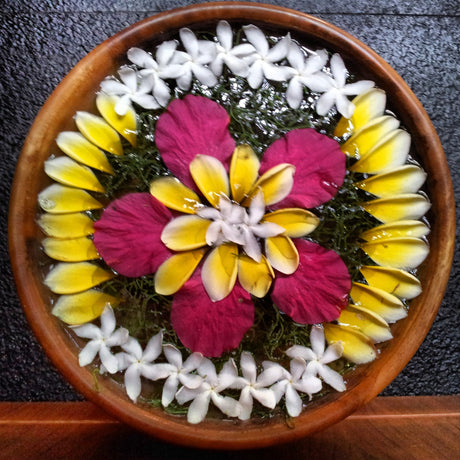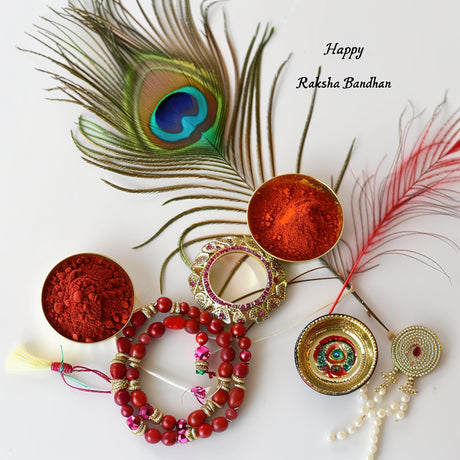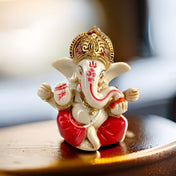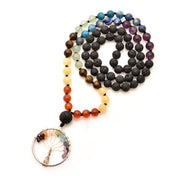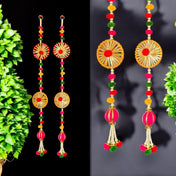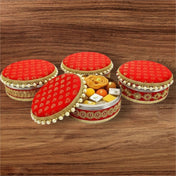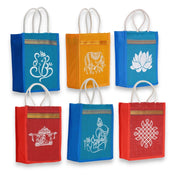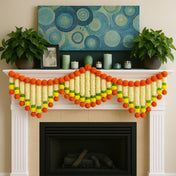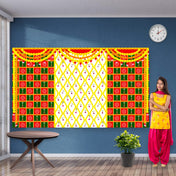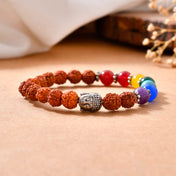Introduction to Toran in Indian Decor
A Toran is an essential part of Indian decor, traditionally placed on doorways and thresholds of homes. They are not just decorative pieces but also symbols of warmth, positivity, and protection against negativity.
Torans have a deep-rooted history in ancient Vedic traditions. Initially made from mango leaves and marigold flowers, these traditional ornaments showcase India's diverse cultural heritage. They are considered auspicious and often seen during festivals, weddings, and other important occasions.
Over time, Torans have evolved while preserving their cultural significance. Today, they come in various forms such as fabric Torans, bead Torans, and even modern versions with crystals and metallic charms. Despite these changes, the essence of Toran remains the same—celebrating love, devotion, and hospitality.
Now you can explore a wide range of beautiful Toran decorations that blend tradition with contemporary styles. These designs provide a unique opportunity to enhance your home decor while staying connected to Indian cultural roots. Check out special styles like the Ganesh Toran, which brings cultural richness to any space.
The Cultural and Symbolic Importance of Toran
Delving into the symbolism of Toran, these decorative hangings are more than just aesthetic enhancements. They embody a rich tapestry of cultural significance, symbolizing love, devotion, and positivity. Traditionally crafted with natural elements like mango leaves and marigold flowers, Torans are believed to welcome prosperity and ward off negative energies, making them a staple in Indian households.
Deeper Meanings Attached to Torans
Torans hold immense value in Indian tradition due to their ability to convey auspiciousness and hospitality. Often placed at the entrance of homes, temples, and offices, these adornments serve as a gesture of warmth and respect towards visitors. The intricate designs and vibrant colors of Torans add a festive flair, reflecting the joyous spirit of Indian culture.
Relevance in Modern Times
Despite rapid modernization, Torans have managed to retain their relevance by seamlessly blending traditional craftsmanship with contemporary aesthetics. Modern adaptations include crystal-embellished or metal-crafted designs that cater to varied tastes while preserving the essence of this ancient art form. This enduring cultural heritage is a testament to the adaptability and timeless charm of Torans.
Embracing the use of Torans today not only enhances home decor but also connects individuals to their roots, fostering a sense of pride and cultural appreciation. For those interested in authentic pieces, exploring options like this pompom Indian door toran can provide both aesthetic appeal and cultural depth.
The journey through the symbolism of Torans reveals their profound impact on both traditional and modern settings. By understanding their deeper meanings and continued relevance, one can truly appreciate the rich heritage they represent.
Different Styles and Types of Toran You Should Know About
Indian Torans come in various styles and types, each reflecting the rich regional diversity and craftsmanship traditions of India. These decorative pieces are more than just adornments; they are cultural symbols that carry forward age-old traditions.
Popular Variations of Toran
Ganesh Toran
- Significance: Named after Lord Ganesh, the remover of obstacles.
- Design: Often features intricate beadwork or embroidery depicting Ganesh motifs.
- Craftsmanship: Typically handcrafted using materials like fabric, beads, and vibrant threads.
Rajasthani Toran
- Significance: Reflects the colorful and vibrant culture of Rajasthan.
- Design: Known for its use of bright colors, mirror work, and detailed embroidery.
- Craftsmanship: Created using traditional techniques like gota patti and zari work, making each piece a unique masterpiece.

Bhandawal Toran
- Significance: Commonly used during festivals and auspicious occasions.
- Design: Characterized by its elaborate designs using flowers, beads, and bells.
- Craftsmanship: Often made with marigold flowers and mango leaves, symbolizing prosperity and positivity.

Exploring these diverse styles allows one to appreciate the nuanced artistry involved in creating Torans. Each type embodies a unique blend of cultural heritage and artistic expression. For example, a fabric mango leaf door toran can add an authentic touch to any home decor. Similarly, a marigold jasmine door toran with its vibrant colors and floral beauty can bring a festive charm to any setting.
Understanding these variations helps in selecting the perfect Toran for your home. Whether it’s the spiritual essence of a Ganesh Toran, the cultural vibrancy of a Rajasthani Toran, or the festive charm of a Bhandawal, there is a style to suit every aesthetic preference. Discovering different types enriches your appreciation for this timeless tradition.
Incorporating Toran into Your Home Decor: Ideas and Inspiration
Impact on Interior Aesthetics
Torans, with their vibrant colors and intricate designs, can transform any space, adding a touch of Indian heritage and festivity. Whether hung over doorways or windows, Torans bring a welcoming vibe and an auspicious feel to your home decor.
Practical Tips for Placement and Styling
- Entryways: Place a Toran above the main entrance to greet guests with warmth and positivity.
- Windows: Use Torans as valances for windows to add a decorative touch without overwhelming the space.
- Interior Doorways: Enhance interior door frames within living rooms or dining areas by adorning them with Torans.
Adapting to Different Decor Styles
1. Minimalist Aesthetic
- Choose simple designs like bead Torans or fabric Torans in neutral tones.
- Focus on clean lines and understated elegance to complement minimalist interiors.
2. Eclectic Approach
- Embrace bold colors and patterns with Rajasthani Torans or Ganesh Torans that feature elaborate embroidery.
- Mix and match different styles and materials to create a lively, personalized look.
Inspiring Examples
- For a festive touch during Diwali, consider the Marigold Jasmine Door Toran, which can instantly uplift your home's ambiance.
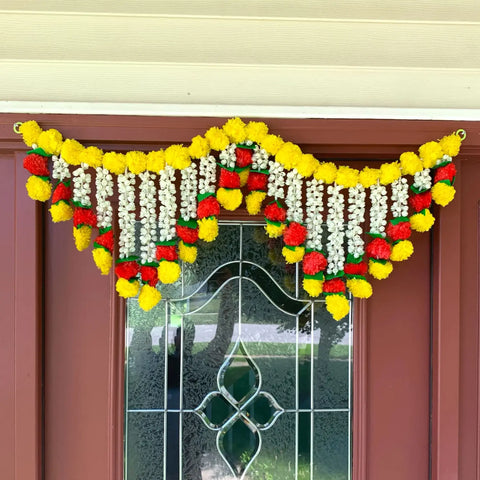
- Add a splash of color to your windows with the Indian Ethnic Bead Door Toran, perfect for creating an eye-catching focal point in any room.
Incorporating Torans into your home decor not only enhances visual appeal but also brings a piece of Indian tradition into your everyday life.
Celebrating Festivals with Exquisite Toran Designs
Torans are special decorations used during major Indian festivals to create a lively and inviting atmosphere in homes. They play a significant role in setting the festive mood and adding a touch of traditional charm to the décor.
Diwali - Festival of Lights
During Diwali, Torans are hung across doorways as a symbol of welcome and prosperity. These decorative pieces are usually made with vibrant marigold flowers, auspicious mango leaves, and delicate bells. The designs often include elements like Ganesh (the elephant-headed deity) and Shubh Labh (a traditional symbol representing good luck).
Fun fact: You can find a wide variety of torans adorned with elephant and ganesha motifs here. These torans are crafted with attention to detail and are perfect for adding a touch of ethnic charm to your home décor during Diwali.
Navratri - Festival of Goddess Durga
Navratri is a festival dedicated to the worship of the goddess Durga. Colorful Torans are used to decorate homes during this time, reflecting the joyous spirit of the celebration. These Torans often feature intricate designs inspired by traditional Rajasthani art, showcasing the cultural heritage of India.
Griha Pravesh - Housewarming Ceremonies
In auspicious ceremonies like Griha Pravesh, placing a Toran at the entrance symbolizes a warm welcome to new beginnings. The Torans used for these occasions are typically made with materials that represent purity and protection, such as fresh leaves and flowers.
Regional Festivals
Apart from Diwali and Navratri, various regional festivals also emphasize the importance of Torans in their celebrations:
- Pongal (Tamil Nadu): During this harvest festival, Torans made from sugarcane and fresh flowers are used to decorate homes, symbolizing abundance and gratitude.
- Ugadi (Karnataka and Andhra Pradesh): This festival marks the New Year in these regions, and decorative Torans featuring neem leaves and bright flowers are prominently displayed to attract good luck for the coming year.
The use of Torans during these festivities not only enhances the visual appeal but also strengthens the cultural bonds within the community. It is a way of preserving traditions and passing them down to future generations, fostering a sense of belonging and pride in one's heritage.
Preserving the Legacy: Supporting Artisans Crafting Traditional Torans
The rich tradition of Toran making is deeply rooted in the craftsmanship of local artisans. These skilled individuals bring to life intricate designs that reflect the cultural heritage of India. Sustaining their livelihoods through ethical sourcing and genuine appreciation for their work is essential.
Why Support Local Artisans?
- Cultural Heritage Preservation: By purchasing authentic Torans, you help keep this age-old art form alive, ensuring its transmission to future generations.
- Economic Impact: Supporting artisans directly contributes to their financial stability, empowering communities that rely on traditional crafts for their livelihood.
- Authenticity and Quality: Handcrafted Torans offer unmatched quality and authenticity, preserving the true essence of Indian decor.
How You Can Help:
- Buy Directly from Artisans: Seek out local markets, fairs, or online platforms where you can purchase directly from the makers.
- Support Organizations: Contribute to organizations dedicated to artisan welfare, such as craft cooperatives and NGOs working towards sustainable development.
- Spread Awareness: Share the stories and significance of traditional Torans with your network, encouraging others to appreciate and support this craft.
Incorporating ethical practices into your decorating choices not only enhances your space but also fosters a meaningful connection with India's cultural heritage.
Giving a Contemporary Twist: Modern Avatars of Toran
Modern adaptations of Toran showcase the blend of traditional artistry with contemporary materials and designs. These innovative interpretations aim to keep the essence of Toran alive while aligning with modern aesthetics.
Crystal-Embellished Torans
Incorporating crystals and beads, these Torans offer a sparkling touch that complements both traditional and modern decor. The use of shimmering elements adds a luxurious feel, making them perfect for special occasions or festive celebrations.
Metal-Crafted Designs
Metal Torans, often adorned with intricate carvings and motifs, bring a sleek and stylish aspect to home decor. Brass, copper, and even stainless steel are used to create durable yet elegant pieces that can withstand outdoor conditions.
DIY Ideas for Making a Toran at Home
Creating your own Toran can be a rewarding experience that allows you to add a personal touch to this traditional decor item. Here are some easy DIY ideas:
Bead and Bell Toran
Crafting a Toran using colorful beads and small bells is simple yet effective. String together beads in patterns of your choice, adding bells at intervals to create a musical element that chimes gently with movement.
Fabric and Ribbon Toran
Utilize scraps of vibrant fabric or ribbons to make a fabric-based Toran. Cut the fabric into desired shapes (like leaves or flowers), attach them to a sturdy base string, and embellish with sequins or small charms.
Recycled Material Toran
Embrace sustainability by using recycled materials such as paper, bottle caps, or old jewelry pieces. This not only results in an eco-friendly decoration but also sparks creativity and innovation.
Engaging in these DIY projects not only fosters a deeper connection to the craft but also allows for customization that reflects individual style preferences.
Where to Find Authentic Torans: Shopping Guide
Finding authentic Torans that capture the essence of Indian decor traditions can be a delightful experience. Here are some trusted online platforms and stores where you can source high-quality pieces for your home:
LoveNspire : This online store offers a wide range of handcrafted Torans, meticulously made by skilled artisans. Each piece showcases the rich cultural heritage of India and is crafted with utmost attention to detail.
Local Markets: Visiting local markets in India, particularly during festive seasons, can be a rewarding experience. These markets offer an array of vibrant Torans, often handmade by local craftsmen, allowing you to support their livelihoods while adding a touch of authenticity to your decor.
Remember, whether you choose to create your own Toran or purchase an authentic one, this beautiful decor item is sure to infuse your space with charm and cultural significance."
In Conclusion
Torans have become an essential part of Indian decor due to their timeless charm and cultural significance. They represent auspiciousness, hospitality, and a strong link to one's heritage. By adding Torans to your home, you not only improve its visual appeal but also honor and protect a valuable cultural practice.
Discover the beauty of Toran as a way to embrace your roots and foster cross-cultural appreciation:
- Celebrate Heritage: Connect with ancient traditions through these exquisite pieces.
- Enhance Aesthetics: Add color, vibrancy, and positive energy to your living spaces.
- Support Artisans: Contribute to sustaining the livelihoods of skilled craftsmen who create these beautiful works.
Make Torans an integral part of your home decor for a meaningful and culturally enriched living experience.

